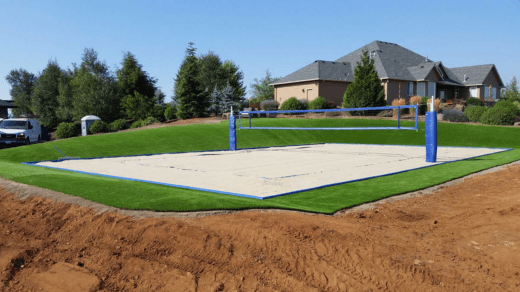The Impact of Volleyball Court Installation on Performance and Safety
Volleyball is an exciting and fast-paced sport that requires agility, precision, and teamwork. While the skills of the players are vital for success, the quality and design of the volleyball court also play a crucial role in both performance and safety. In this article, we will explore the impact of Volleyball court installation on these aspects and discuss the key factors to consider when installing a volleyball court.
Importance of Volleyball Court Installation
Enhancing Performance
A properly installed volleyball court can significantly enhance player performance. The court’s dimensions, markings, and net height all contribute to creating an optimal playing environment. Accurate court dimensions ensure that players have enough space to move freely, facilitating smoother gameplay and reducing the risk of collisions. Additionally, well-defined markings help players judge ball placement accurately, leading to better decision-making and more strategic gameplay.
Ensuring Safety
Safety is paramount in any sport, and volleyball is no exception. A well-designed and correctly installed court minimizes the risk of injuries for players. The court’s surface material, cushioning, and shock absorption properties play a crucial role in reducing the impact on joints and preventing injuries, such as sprains or fractures. Additionally, the court should have excellent anti-slip properties to prevent players from slipping or losing balance during intense rallies.
Choosing the Right Surface
When installing a volleyball court, choosing the right surface material is of utmost importance. The surface should be carefully selected based on various factors such as player preferences, budget, and intended use (indoor or outdoor).
Factors to consider when selecting a surface material include:
- Durability: The surface should be able to withstand frequent use and maintain its quality over time.
- Ball response: The material should provide consistent ball response, allowing players to predict and control ball movement effectively.
- Traction: Sufficient traction is essential to prevent slips and falls while maintaining agility on the court.
- Maintenance requirements: The chosen surface should be easy to maintain and clean, ensuring its longevity.
Designing an Optimized Court
Apart from the surface material, other aspects of the volleyball court design also impact performance and safety. The following considerations should be made during the design process:
Dimensions and Markings
The dimensions of a volleyball court are standardized to ensure fair gameplay. The court should measure 18 meters long and 9 meters wide for both indoor and outdoor games. Additionally, accurate markings, such as boundary lines and attack lines, aid players in positioning themselves correctly during play.
Net Height and Placement
The net height is crucial for maintaining fairness and challenging gameplay. For men’s volleyball, the net should be set at a height of 2.43 meters, while women’s volleyball requires a net height of 2.24 meters. The net should also be securely placed, ensuring it remains stable throughout the game.
Impact of Surface Material
Indoor Courts
Indoor volleyball courts commonly use materials such as hardwood or synthetic flooring. Hardwood surfaces offer excellent ball response and are often preferred for professional or high-level competitions. Synthetic flooring, on the other hand, provides durability, easy maintenance, and enhanced shock absorption properties.
Outdoor Courts
Outdoor volleyball courts require different considerations due to exposure to the elements. Materials like concrete, asphalt, or sand are commonly used for outdoor courts. Concrete provides a solid and durable surface, while asphalt offers good traction. Sand courts are popular for recreational settings, as they provide softer landings and a unique playing experience.
Safety Considerations
Safety should always be a top priority when installing a volleyball court. Several safety measures can be taken to ensure a secure playing environment:
Cushioning and Shock Absorption
The court’s surface should have adequate cushioning and shock absorption properties to minimize the impact on players’ joints and reduce the risk of injuries. Materials like rubberized flooring or specialized sports surfaces can provide excellent shock absorption, preventing long-term damage to players’ bodies.
Anti-Slip Properties
Slips and falls can lead to serious injuries, so the volleyball court should have sufficient anti-slip properties. This can be achieved through surface texturing, using materials with high friction characteristics, or applying anti-slip coatings. Regular maintenance and cleaning are also essential to remove any debris or moisture that may affect traction.
Maintenance and Longevity
To ensure the longevity and optimal performance of a volleyball court, regular maintenance is necessary. Here are some maintenance practices to consider:
Regular Inspections and Repairs
Periodic inspections should be conducted to identify any issues or damage that may compromise the court’s performance or safety. Any necessary repairs, such as fixing cracks or replacing damaged surface sections, should be promptly addressed.
Weather Resistance
Outdoor volleyball courts are exposed to various weather conditions, which can impact their durability. Choosing materials that are weather-resistant and applying appropriate sealants or coatings can help protect the court from damage caused by rain, sun exposure, or extreme temperatures.
The installation of a volleyball court has a significant impact on both performance and safety. By choosing the right surface material, designing an optimized court, considering safety measures, and implementing proper maintenance, players can enjoy a superior playing experience while minimizing the risk of injuries.

